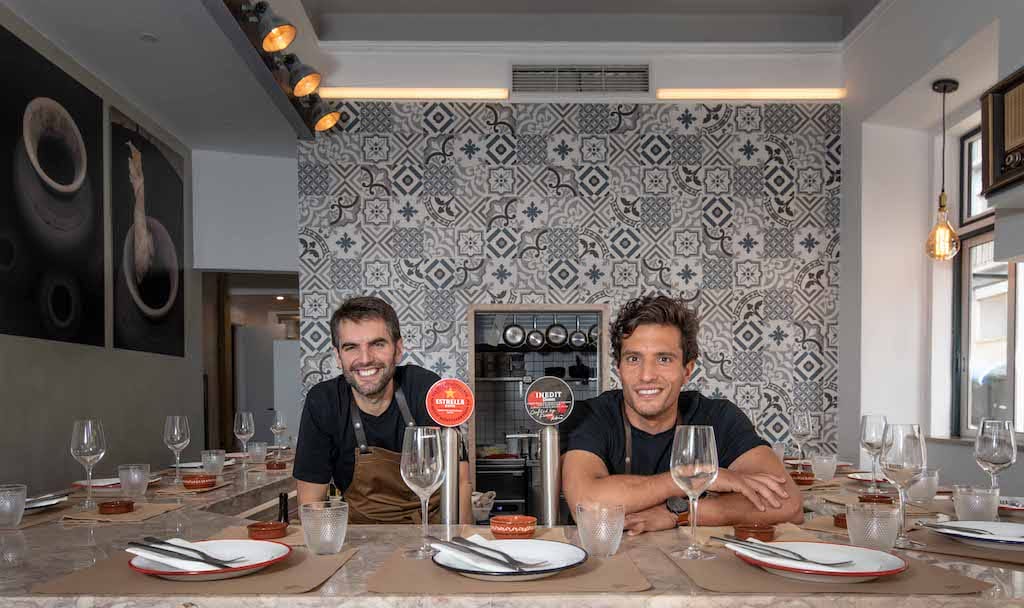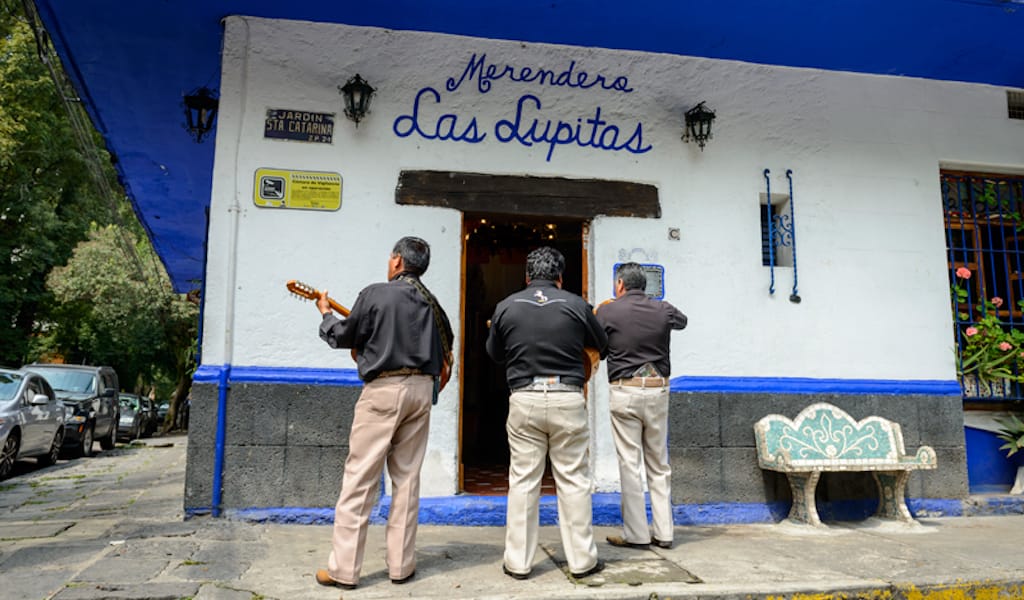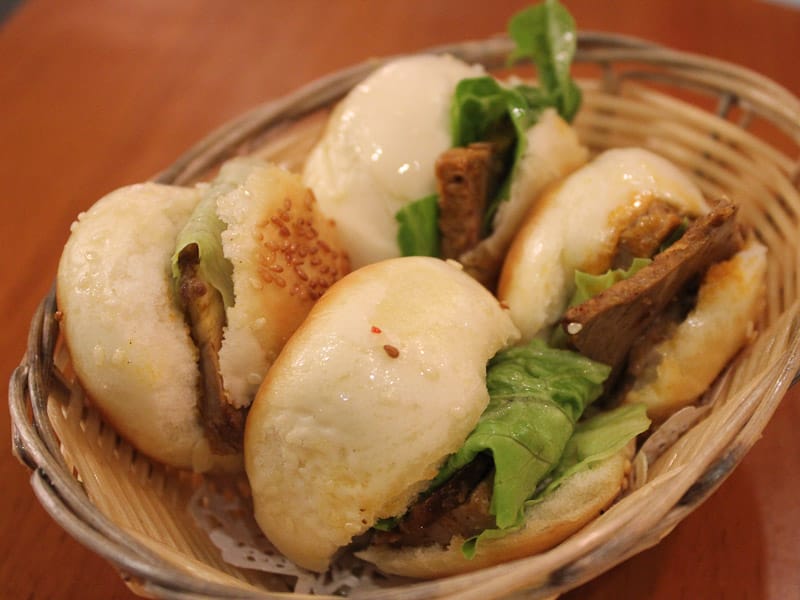Every year, for one month only, bakeries across Istanbul churn out round, flat, yeasty loaves of Ramazan pide bread. Before Muslims break their fast at sundown, they hurry to buy these addictively chewy pides, which are essential to the iftar meal here. Some bakeries rely on machines to shape the pide and stamp the traditional checkerboard pattern on top; others do it the old-fashioned way, by hand in wood-fired ovens.
Tophane Tarihi Taş Fırın is a third-generation, family-run bakery that is known for its simit, the sesame-crusted bagel sold on every corner in Istanbul. They also make excellent Ramazan pide in their 130-year-old wood oven. Two easygoing Eryılmaz brothers run the shop, while additional family members head up many other bakeries in the area. The pide-making process comes easily because they’ve been working in their dad’s bakery since they were 13 years old.
Upstairs, an usta (master) mixes the dough at 4:30 in the afternoon: one huge sack of Edirne flour, yeast, cold water and salt. After a short rise, the dough is divided into balls, then left to proof on sheet trays lined with whole-wheat flour. They pass the sheet pan through a slit in the floor to the ustas downstairs. In front of the hot oven, the usta casually glazes the proofed dough rounds with yogurt and egg yolks, then presses the edge of his palms in a crosshatch pattern to flatten the dough and finally sprinkles nigella seeds on top. The next usta eases the soft pide from a 10-foot-long wood paddle into the giant oven for seven to 10 minutes. The wood paddle is so long that they cut a hole in the front window for the end to stick out – unaware pedestrians might find themselves in a surprise jousting match. Another worker brushes the excess whole-wheat flour from the bottom of each pide before stacking them on a display table.
The first customer is the owner of Osmanlı Mutfağı restaurant in nearby Karaköy. He comes here every day during Ramadan to pick up a few bags of pide because “[his customers] prefer it to regular bread for iftar.” Next up is a woman who is particular about the topping – she’s after only eggs, not yogurt. A girl comes in but doesn’t have small change. She leaves with a hot pide and a promise to come back tomorrow with her coins.
This is truly a neighborhood bakery, where people come for traditional Ramazan pide, made dutifully to their standards by dedicated ustas. The brothers say they don’t make a profit on Ramazan pide, but rather do it “to be friends with the neighbors.”

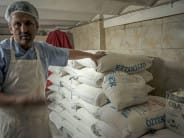
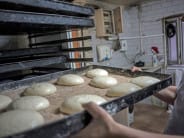
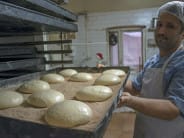
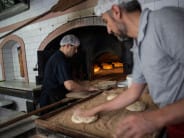
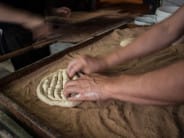

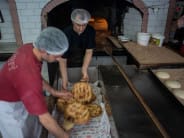
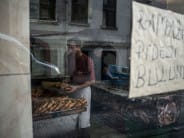
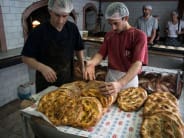


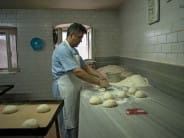
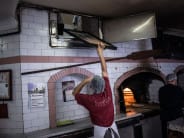

This review was originally published on July 21, 2014.
 June 26, 2019 O Frade
June 26, 2019 O Frade
Up on the walls of O Frade’s polished interior is an old radio that catches the eyes of […] Posted in Lisbon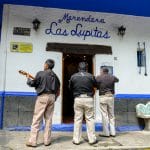 October 9, 2014 Merendero Las Lupitas
October 9, 2014 Merendero Las Lupitas
In the U.S., chimichangas and burritos are always associated with Mexican food, but in […] Posted in Mexico City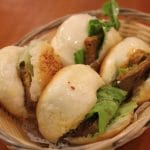 September 23, 2013 Dunhuang Xiaoting
September 23, 2013 Dunhuang Xiaoting
At the dusty eastern edge of the Taklamakan Desert, the ancient city of Dunhuang marked […] Posted in Shanghai
Published on June 29, 2015
Related stories
June 26, 2019
LisbonUp on the walls of O Frade’s polished interior is an old radio that catches the eyes of most clients. The music wafting from it is part of an illusion: “We hid the wireless speakers we use inside it because the radio doesn’t work anymore,”' says chef Carlos Afonso, who runs this small new restaurant…
October 9, 2014
Mexico CityIn the U.S., chimichangas and burritos are always associated with Mexican food, but in the central part of Mexico those words don’t mean a lot. In Mexico City, specifically, it’s very hard to find burritos that resemble those found north of the border, and the word “chimichanga” doesn’t even exist in our vocabulary. There is…
September 23, 2013
ShanghaiAt the dusty eastern edge of the Taklamakan Desert, the ancient city of Dunhuang marked the intersection of the northern and southern parts of the Silk Road. Meaning “Bright Beacon,” Dunhuang was a historical refuge for weary travelers peddling their wares along the trade route, and this confluence of cultures influenced the ancient city’s cuisine.…


























































